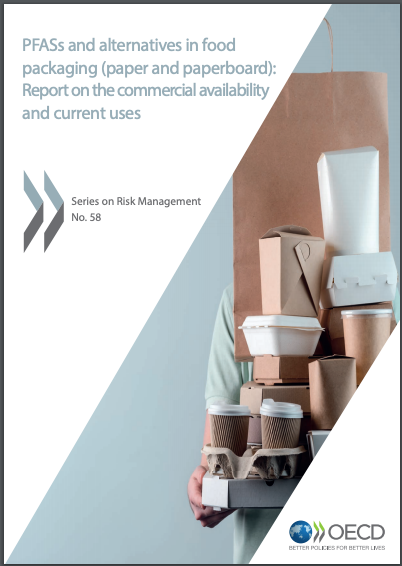Chemycal has been acquired by 3E
Learn MoreChemycal has been acquired by 3E
Learn MoreDiscover how Chemycal PRO helps you boosting your regulatory monitoring:

EXECUTIVE SUMMARY
This report addresses the commercial availability and current uses of alternatives (chemical and non-chemical) to per- and polyfluoroalkyl substances (PFASs) in food packaging(paper and paperboard). The work was conducted within the framework of the OECD/UNEP Global Perfluorinated Chemicals (PFC) Group.
The study is based on reviewed publicly available information from worldwide sources, including from the OECD/UNEP Global PFC Group members and additional stakeholders. The review has been supplemented by in-depth discussions with key players from the value chain for food packaging. The report is based upon a data set which includes information from PFAS producers, non-fluorinated alternative producers and publicly available literature.
The findings of this work are as follows. Short-chain (SC) PFAS and non-fluorinated alternatives to long-chain (LC) PFAS1 are available on the global market and can be used to produce paper and board for use in food packaging. There are 28 fluorinated substances currently included2 on the US Federal Drug Administration (FDA) list to confer grease/oil/water resistance to paper and board. These are reported to be used in 19 formulations (DTSC, 2020[1]). The German Bundesinstitut für Risikobewertung (BfR) recommended list contains 12 fluorinated substances that are listed as surface refining and coating agents and which are likely to be used to confer grease and water resistance for food packaging.
On performance alone, both SC PFAS and non-fluorinated alternatives identified in this study can meet the high grease and water repellence specifications required for the common food and pet food packaging uses. For some applications, non-fluorinated alternatives have a performance advantage over SC PFAS.
The current market share of non-fluorinated alternatives appears to be approximately 1% or less. The key reason for the current lack of market share of non-fluorinated alternatives is the higher cost of non-fluorinated alternatives, which results in paper and board for food packaging between 11-32% more expensive3 than food packaging using SC PFAS.
There are technical challenges to moving from LC PFAS to SC PFAS and from SC PFAS to non-fluorinated alternatives. However, the main obstacle to substitution from SC PFAS to non-fluorinated alternatives is the cost differential. If there are sufficiently strong reasons for the value chain to pay for the premium non-fluorinated alternatives, it will do so.
Based upon this review, a number of policy recommendations are suggested in this report as well as areas that may be considered for further work (see Section Chapter 6. ). These have been divided into those aimed at international organisations and those aimed at industry.
LINK TO OECD Report
2013 © MyChemicalMonitoring. ALL Rights Reserved. About Us | Terms and Conditions